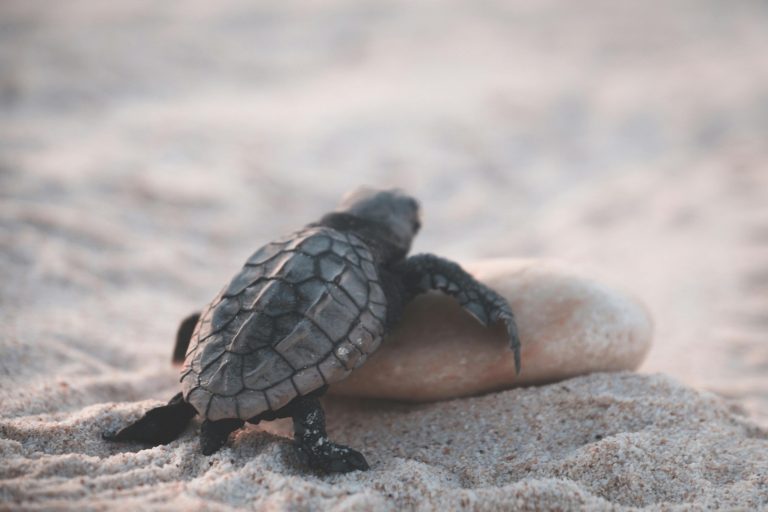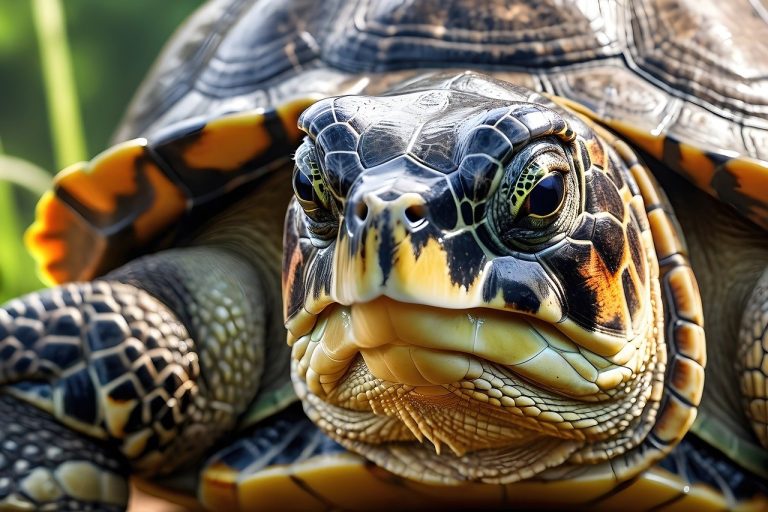Tortoise Growth Rate: How To Make Them Grow Faster?
The tortoise help forums are flooded with inquiries such as, “How big should a 1-year-old Sulcata tortoise get?” or “What’s the ideal size of a 5-year-old tortoise’s carapace?” While I understand the concern, it’s crucial to conduct thorough research on the particular species of tortoise before bringing one home.
Therefore, I’m tackling the issue of tortoise growth rates and methods to encourage faster growth.
Tortoises typically display a growth rate ranging from 1 to 4 inches per year, which varies depending on their species. For instance, Burmese tortoises may develop their carapace by 1 to 2 inches annually, while Leopard tortoises might see growth of 2 to 4 inches. Various factors influence this rate, and growth tends to slow down after reaching a certain stage.
In the following article, we’ll delve into the specific growth rates of different tortoise species and their expected full sizes. Additionally, we’ll discuss methods to promote healthy development. So, let’s dive in.

Tortoise Growth Rate: How To Make Them Grow Faster?
Honestly, it’s challenging to guarantee or idealize an exact growth rate when it comes to tortoises. Let me share my personal experience as an example.
I have two Russian tortoise hatchlings that are the same age. Despite receiving identical care, they’ve surprisingly shown different rates of growth. On their first birthday, one of them measured a robust 3.5 inches, while the other was struggling to reach 2 inches.
So, what went wrong? Care was definitely not the issue, as I made sure they both received the same level of attention and care.
The truth is, just like you can’t expect all your children to be the same height, the same holds true for tortoises. Some may reach their expected growth milestones while others may lag behind.
There’s no need to worry, as long as the pet is healthy, receiving excellent care, and going about its daily activities.
If you’re determined to pinpoint an ideal growth rate, it typically falls somewhere between 2 to 4 inches, varying by species. However, it’s important to note that this figure is never universal and tends to decrease over the years. In many cases, tortoises reach maturity and cease growing altogether, or their development rate slows significantly.
I’ll delve further into the topic of tortoise growth rates in the upcoming sections.
What Is The Growth Rate Of A Tortoise?
Larger tortoises tend to exhibit faster growth rates, which often grab attention. Take Sulcata tortoises, for instance; they can grow a remarkable 4 to 6 inches in their first year and 1.25 to 2.1 inches in the subsequent years. On the flip side, the growth of smaller tortoises like spider tortoises may not be as noticeable.
Incredible as it may seem, Sulcata tortoises can pack on more than 2.2 pounds, going from 1.5 pounds in just one year. Such rapid developments are quite exceptional and not typically seen in other tortoise species.
In the world of tortoises, the growth rates can vary significantly, especially between smaller and larger species. Smaller tortoises tend to grow at a rate of 1 inch or less per year, with only a few grams added to their body weight. As a result, these changes often go unnoticed.
Let’s take a closer look at the growth rates of different tortoise species:
| Tortoise Species | Average Size | Average Weight | Additional Information |
|---|---|---|---|
| Aldabra Tortoise | 3 – 4 feet | 300 – 550 lbs | Aldabra tortoise hatchlings begin with a carapace of 2 – 2.5 inches, reaching 4 inches within 4 months. By the age of 30, females grow to 3 feet and males to 4 feet, with half of their full size achieved. These tortoises can weigh up to 800 lbs. |
| Burmese Mountain Tortoise | 2 feet | 70 – 100 lbs | Burmese mountain tortoise hatchlings are initially no bigger than a baseball diameter (3 inches), growing 1 – 2 inches annually until reaching sexual maturity, typically around 15 years. |
| Egyptian Tortoise | 4 – 5 inches | 0.2 – 0.8 lb | Egyptian tortoise babies start out about the size of a dime, less than an inch long. In 7 – 10 years, they reach their adult carapace length, though some may achieve this in just 4 years. |
| Elongated Tortoise | 12 – 14 inches | 7 lbs | Elongated tortoise hatchlings measure about 3 – 4 cm. Typically reaching up to 14 inches, their growth rate decreases after sexual maturity. Males mature around 3 – 6 years, while females can mate at 8 – 14 years. |
| Greek Tortoise | 8 – 12 inches | 13 lbs | Greek tortoise hatchlings are tiny, no larger than an inch. Within 2 years, they can grow about 4 inches, reaching full maturity around the age of 10 or later. |
| Hermann’s Tortoise | 5 – 8 inches | 7 – 9 lbs | Hermann’s tortoise hatchlings are minuscule, about the size of a dime. Slow growers, they take nearly 12 years to reach adult carapace length. |
| Indian Star Tortoise | 7 – 12 inches | 3 – 4.9 lbs | Indian star tortoises show rapid growth, with babies just over an inch long. They achieve full carapace length within 2 – 3 years. |
| Leopard Tortoise | 16 – 18 inches | 44 lbs | Baby leopard tortoises start out at 1.5 inches and gain 2 – 4 inches annually. Some reach maturity at 6 years, with growth slowing thereafter, reaching full size at 12 – 15 years. |
| Marginated Tortoise | 12 – 15 inches | Over 11 lbs | Marginated tortoise hatchlings are 2 – 2.5 inches or smaller. They experience rapid growth throughout youth, adding over 100 grams yearly even after sexual maturity, though growth rate slows after 20 years. |
| Radiated Tortoise | 16 inches | 35 lbs | Radiated tortoise hatchlings are about the size of a golf ball, 1.6 inches. Growing around 2 inches annually, they reach maturity at a carapace length of 11 – 12 inches. |
| Red Footed Tortoise | 10 – 18 inches | 20 – 30 lbs | Red-footed tortoise babies measure 2 inches and grow one inch yearly, reaching up to 30 lbs by age 10. |
| Russian Tortoise | 8 – 10 inches | 2.5 – 3 lbs | Russian tortoise hatchlings are under 1 inch long and reach 8 – 10 inches over 15 – 20 years. |
| Spider Tortoise | 7 inches | A few grams to kgs | Spider tortoise hatchlings measure about 1.5 inches and weigh 13 grams. They mature within 6 to 14 years, with growth rate slowing drastically thereafter. |
| Sulcata Tortoise | 26 – 32 inches | 50 kg++ | Sulcata tortoises are the fastest-growing, with babies starting at about 1.5 inches and growing 33 times in the first 5 years, reaching 10 – 20 inches. Continued development occurs for 15 – 20 years. |
| Yellow Footed Tortoise | 10 – 18 inches | 20 – 30 lbs | Yellow-footed tortoise babies measure 2 inches and grow one inch yearly, reaching up to 30 lbs by age 10. |
As you can see, the growth rates and patterns vary greatly among tortoise species, making each one unique in its development journey.
Are you considering adding a tortoise to your family or perhaps in the future?
Allow me to introduce you to XYZReptiles.com, a reputable store known for selling pet animals with a LIVE ARRIVAL GUARANTEE. Here’s why getting your tortoise from XYZReptiles is a great idea:
- You’ll receive a 100% Live Arrival Guarantee on all their animals.
- They ensure that the sex of the animal matches what was stated at the time of purchase.
- The tortoises they offer are perfectly sized for transitioning into their new homes—not too large, yet not too small either!
- Worried about the price? Fear not! You have the option to split the payment into four interest-free parts using PayPal!

How Long Does A Tortoise Take To Grow?
On average, a tortoise reaches its full size within a span of 5 to 10 years. However, this timeline can vary significantly based on the species and even the gender of the tortoise. For instance, Indian star tortoises achieve adult size in as little as 3 years, whereas it may take 15 to 20 years or more for a Sulcata tortoise to reach its full size. Additionally, males typically tend to reach full carapace length before females do.
Here’s a chart outlining the approximate age frame for tortoises to reach their full length:
| Tortoise Species | Approximate Age to Reach Full Length |
|---|---|
| Indian Star Tortoise | 3 years |
| Greek Tortoise | 10 years |
| Russian Tortoise | 15-20 years |
| Aldabra Tortoise | 30 years |
| Hermann’s Tortoise | 12 years |
| Leopard Tortoise | 12-15 years |
| Marginated Tortoise | 20 years |
| Radiated Tortoise | 20 years |
| Red Footed Tortoise | 10 years |
| Burmese Mountain Tortoise | 15 years |
| Egyptian Tortoise | 7-10 years |
| Elongated Tortoise | 15 years |
| Sulcata Tortoise | 15-20 years |
| Yellow Footed Tortoise | 10 years |
| Spider Tortoise | 6-14 years |
Please note that these are approximate estimates and actual growth rates may vary based on individual tortoise’s health, diet, and environmental factors.
Tortoise Size Age Chart: Sulcata Tortoise Growth Chart
The growth rate of tortoises varies greatly depending on the species. Take, for instance, the Sulcata tortoise. When newly born, it measures around 1.5 inches. By the end of its first year, it can grow nearly 10 inches in length. By the time it reaches 15 years old, this remarkable creature can attain a carapace length of approximately 26 inches.
Here’s a growth chart for Sulcata Tortoises based on age, carapace length, and body weight:
| Sulcata Tortoise Age | Carapace Length | Body Weight |
|---|---|---|
| Hatchlings (0 to 3 Weeks) | 1 ½ to 2 Inches | 25 to 40 Grams |
| 3 Months Old | 2 to 2.5 Inches | 40 to 50 Grams |
| 6 Months Old | 2.5 to 3 Inches | 50 to 58 Grams |
| 1 Year Old | 6 to 8 Inches | 700 to 1000 Grams |
| 3 Year Old | 10 to 15 Inches | 10 to 15 Kgs |
| 5 Year Old | 10 to 20 Inches | 5 to 15 Kgs |
| 10 Year Old | 20 to 24 Inches | 15 to 31 Kgs |
| 15++ Year Old | 26 Inches+++ | 30 to 50 Kgs++ |
Please note that these measurements are approximate and can vary based on individual tortoises and their environmental conditions.
The growth pattern of Horsfield tortoises is quite fascinating. When they’re born, these little creatures measure around 1 inch in length. By the end of their first year, they typically grow to about 3 inches. Within 5 years, they can reach a length of 5 to 6 inches, or even more.
While some sources suggest that Horsfield tortoises attain their full length of 9 to 10 inches within the first 5 years, other reports indicate that it may take closer to 10 years for these tortoises to reach their full carapace length. This discrepancy highlights the variability in growth rates among individual tortoises and the importance of considering multiple sources of information.
Russian tortoise hatchlings typically start their journey with a size of 1 inch or even less. Within the first year, these little ones can exhibit impressive growth, reaching up to 3.5 inches in length, showing maximum growth during this period. However, it takes a considerable amount of time—approximately 15 to 20 years—for Russian tortoises to reach a carapace length of 8 to 10 inches. This gradual growth process highlights the importance of patience and proper care when raising these fascinating creatures.
Can A Tortoise Grow Too Fast?
Tortoises, particularly those in captivity, can sometimes exhibit rapid growth, which is often abnormal and attributed to overfeeding. This can lead to various health issues such as pyramiding, obesity, high mortality rates, gastrointestinal diseases, or renal problems in tortoises. However, taking timely action can help minimize these health risks and potentially revive the pet’s well-being.
As I always emphasize, each tortoise will grow at its own pace.
It’s not uncommon for owners to become concerned when their pets don’t develop their carapace as expected, prompting them to seek tips for accelerating their tortoises’ growth. However, it’s crucial to recognize that rapid growth can be indicative of underlying health issues.
Tortoises experiencing abnormal growth often encounter a range of health issues such as obesity, pyramiding, digestive problems, kidney failure, or liver stones, particularly prevalent among those in captivity. But why does this occur?
In the wild, tortoises naturally regulate their diet, consuming only what they need. However, in captivity, it’s up to us to determine their food intake and establish feeding routines.
Unlike many animals, tortoises aren’t opportunistic feeders, mainly because their diet consists primarily of fiber, and they don’t need to actively hunt for prey. With abundant vegetation in their natural habitats, tortoises are constantly surrounded by nourishment.
In captivity, the scene mirrors what we see in the wild. But what’s the snag here?
Well, there are four culprits behind the tortoises’ unhealthy growth:
- Overindulgence in protein
- Excessive calcium intake
- Overconsumption of phosphorus
- Insufficient vitamin D3
Tortoises are predominantly herbivores, munching on greens as their mainstay. Hence, gorging on protein is a rarity among them. Nonetheless, certain tortoise species boast an omnivorous streak, nibbling on a smorgasbord of worms, insects, carrion, and even deceased critters. For these omnivorous fellows, overeating isn’t much of a bother, often resulting in a quicker growth spurt than the norm.
Transitioning to the second concern.
Calcium plays a pivotal role in the shell and bone development of tortoises. However, an excess of this mineral spells trouble for our shelled companions. They’ll endure accelerated growth of their shell, plastron, and beaks, a plight for them indeed.
Likewise, a diet rich in phosphorus yields similar repercussions for tortoises. Lastly, a deficiency in vitamin D3 within their diet or the absence of adequate UV exposure can disrupt the tortoise’s growth cycle.
How do you discern if your tortoise is growing at an alarming rate? Consider the following:
- Refer to the tortoise’s growth chart and compare its progress. Any deviations should prompt a revisit to your care regimen and a thorough check for signs of illness. Seek veterinary advice if no issues are apparent.
- Keep an eye out for fatty deposits on the tortoise’s neck and limbs, along with mobility issues.
- Weight loss, lethargy, and dehydration may signal renal failure.
- Abnormalities such as bumpy scutes, irregular bone or spine growth, and overgrown beaks are indicative of pyramiding and overconsumption.
How To Make The Tortoise Grow Faster?
Indeed, rapid growth isn’t always synonymous with good health. It’s imperative to ensure that tortoises grow at a steady and healthy pace. Here’s what you need to do:
- Provide a Balanced Diet: Offer a balanced diet rich in leafy greens, vegetables, and fruits appropriate for your tortoise species. Avoid overfeeding protein, calcium, or phosphorus-rich foods.
- Offer Proper Lighting: Ensure your tortoise receives adequate exposure to natural sunlight or provide a UVB light source to facilitate proper absorption of calcium and synthesis of vitamin D3.
- Monitor Growth: Regularly monitor your tortoise’s growth using a growth chart specific to its species. Compare its development over time to ensure it aligns with healthy growth patterns.
- Maintain Optimal Habitat Conditions: Keep the tortoise’s enclosure clean and appropriately sized, with access to hiding spots, basking areas, and a shallow water dish for soaking.
- Consult a Reptile Veterinarian: If you notice any abnormalities or concerns regarding your tortoise’s growth, behavior, or health, seek advice from a qualified reptile veterinarian promptly.
By following these guidelines, you can help ensure that your tortoise grows and thrives in a healthy and sustainable manner.
Why Is My Tortoise Not Growing?
When a tortoise isn’t growing as expected, it’s essential to approach the situation with a thoughtful and investigative mindset rather than assigning blame. Several factors could contribute to slower growth:
- Dietary Issues: Insufficient or imbalanced nutrition can hinder growth. Reevaluate the tortoise’s diet and ensure it’s receiving the appropriate balance of nutrients.
- Environmental Factors: Inadequate habitat conditions, such as incorrect temperature, humidity levels, or lighting, can impact a tortoise’s growth rate. Ensure the enclosure is set up correctly for the species’ requirements.
- Health Concerns: Underlying health issues, such as parasites, infections, metabolic disorders, or genetic abnormalities, can impede growth. If you suspect health issues, consult a reptile veterinarian for a thorough examination.
- Stress or Environmental Changes: Significant changes in the tortoise’s environment or stressful situations can affect its appetite and growth. Ensure the tortoise is housed in a stable and comfortable environment.
Instead of assigning blame, focus on identifying and addressing the underlying cause of the slower growth. By proactively addressing any issues and making necessary adjustments, you can promote the tortoise’s health and well-being.
What Is The Fastest Growing Tortoise In The World?
Sulcata tortoises hold the title of being the fastest-growing tortoise species globally. Astonishingly, they exhibit a staggering growth rate, multiplying their carapace length by up to 33 times during their developmental journey. On average, these remarkable creatures add 1.25 to 2.1 inches to their carapace each year.
When fully matured, Sulcata tortoises can attain an impressive carapace length of up to 32 inches. However, their journey to this substantial size begins modestly, with hatchlings typically measuring no more than 2.5 inches. Over the course of 15 to 20 years, they gradually attain their full carapace length through this remarkable growth trajectory.
Indeed, numerous factors influence the growth rate of Sulcata tortoises, making it a multifaceted journey. Here are some key influencers:
- Egg Size: The initial size of the egg can affect the health and development of the hatchling, potentially influencing its growth trajectory.
- Incubation Environment: The conditions during incubation, including temperature and humidity, play a crucial role in determining the hatchling’s health and subsequent growth rate.
- Gender: Gender can also impact growth rates in Sulcata tortoises, with males typically exhibiting faster growth compared to females.
- Diet: Providing a balanced and nutritious diet is essential for promoting healthy growth. The types and quantities of food offered can significantly influence the tortoise’s development.
- Enclosure: The size and design of the enclosure can affect the tortoise’s activity level and overall well-being, thereby influencing its growth rate.
- Habitat Setup and Surroundings: The environmental conditions within the enclosure, such as temperature gradients, hiding spots, and substrate type, can impact the tortoise’s behavior and growth.
- Hydration: Adequate hydration is vital for proper growth and development. Access to clean water for drinking and soaking is essential for Sulcata tortoises.
- Health: Any underlying health issues or stressors can hinder growth rates. Regular health check-ups and proactive management of any concerns are crucial for ensuring optimal growth.
By carefully considering and managing these various factors, tortoise keepers can help facilitate healthy growth and development in Sulcata tortoises.
Before You Go…
Tortoises, in their journey to maturity, often stretch by about 1 to 4 inches annually. Nevertheless, their growth might take a leisurely pace on occasions. But fret not, as long as these shelled companions are keeping well and munching on their greens, there’s no cause for concern. Yet, a trip to the vet for a check-up can provide that extra reassurance.
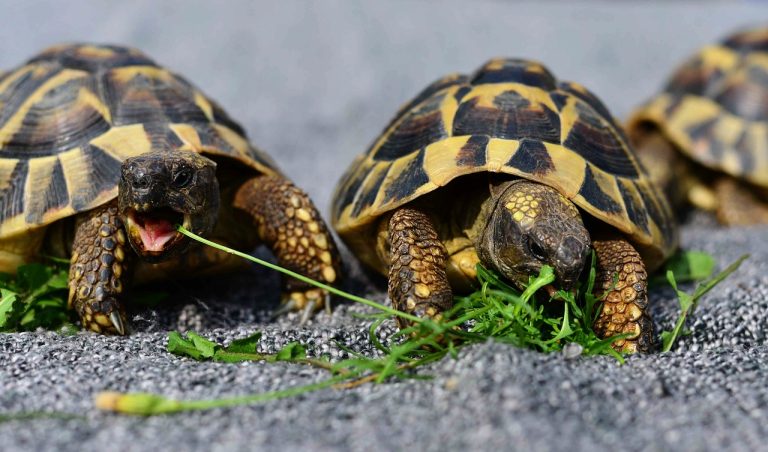
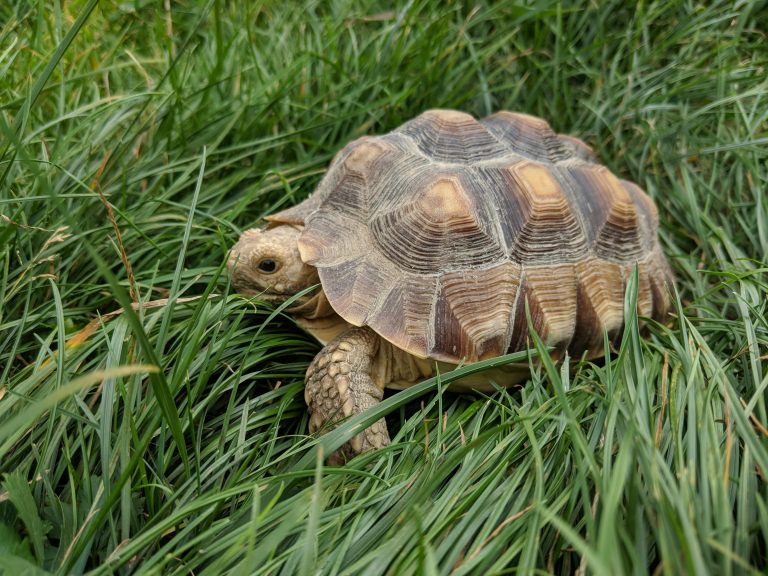
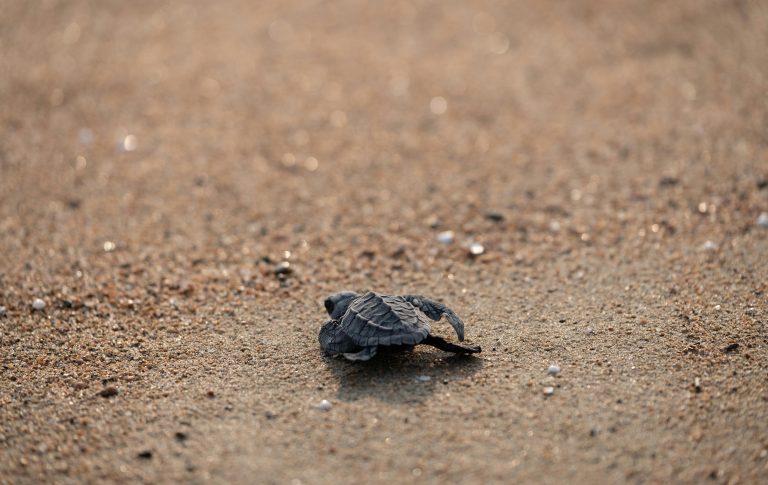
![Why Did My Sulcata Tortoise Die? [8 Probable Reasons]](https://spreadhapiness.com/wp-content/uploads/2024/03/sulcata-t-2-768x512.jpg)
